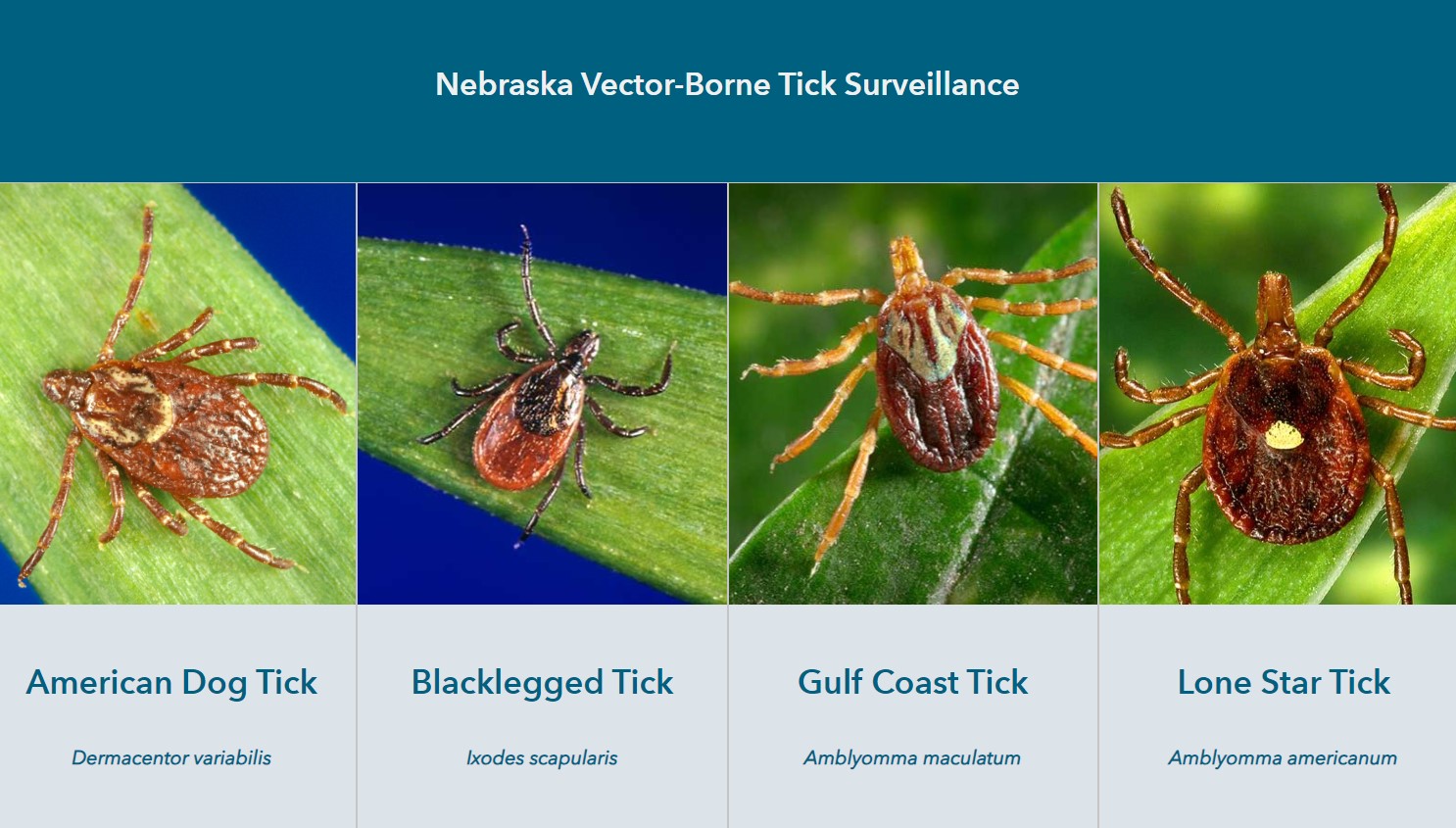When ticks are active in Nebraska (April-October), staff from the NE DHHS vector-borne disease program and local health departments search for ticks at various sites throughout the state in a process called "tick dragging." Using a white canvas cloth, ticks are collected, identified to species under a microscope, and tested for pathogens. Tick surveillance provides actionable, evidence-based information to clinicians, public health practitioners, policymakers, and the public on where and when people are at risk for exposure to ticks and tick-borne disease pathogens.
Nebraska Department of Health & Human Services has been conducting active tick surveillance since 2021 with the goal of sampling all 93 counties in five years.
The maps below show distribution data (which species are where) of the ticks found through our surveillance and also tick testing data (which pathogens the ticks are carrying). The maps will be updated yearly at the end of our surveillance season and when pathogen testing results are received.
Nebraska DHHS Tick Surveillance Maps
 *Maps created by NE DHHS GIS Coordinator, Jennifer Parmeley
*Maps created by NE DHHS GIS Coordinator, Jennifer Parmeley
Syndromic Surveillance Reports
The following reports show seasonal trends in reported tick bites and tick-borne disease diagnoses in Nebraska residents. The reports are updated bi-weekly during vector season when tick and tick-borne disease activity increases (April – October) and monthly the rest of the year.
Historical Data
Annual Reports
2024 Tickborne Disease Report
2023 Tickborne Disease Report
Data by Condition
Anaplasmosis
Reported Cases by Year |
Reported Cases by Month of Onset
Ehrlichiosis
Reported Cases by Year |
Reported Cases by Month of Onset
Lyme Disease
Reported Cases by Year |
Reported Cases by Month of Onset
Spotted Fever Group Rickettsioses
Reported Cases by Year | Reported Cases by Month of Onset
Tularemia
Reported Cases by Year |
Reported Cases by Month of Onset